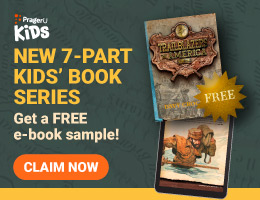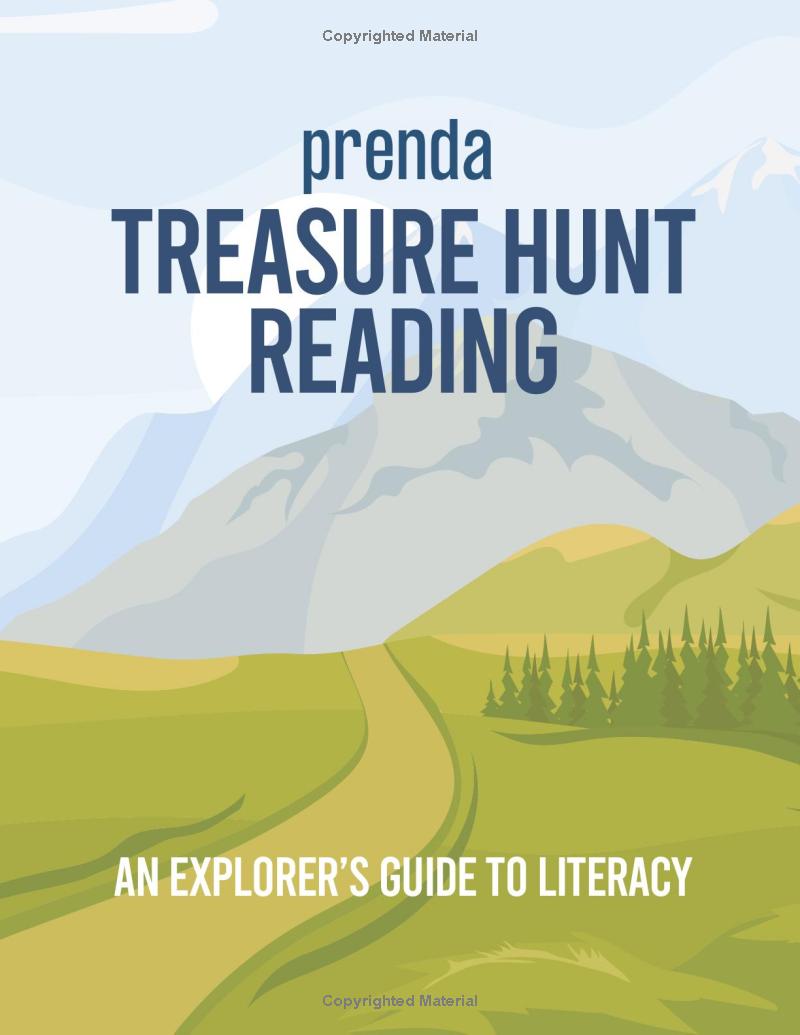The Treasure Hunt Reading Program, available free online, uses the phonics-based, Orton-Gillingham approach. The program consists of online videos and a downloadable 333-page book titled Treasure Hunt Reading: An Explorer’s Guide to Literacy. You will want to print out the book because students will need to write on the pages. And though expensive, you will want to print in color since the book has full-color illustrations and graphics, and the vowels and vowel phonograms are often printed in red while other letters and words are black. You can also purchase the book on Amazon, which might be the best option.
While this is an intensive phonics program, it also teaches 30 sight words. It uses multisensory methods: videos, reading, writing, singing, body motions, letter-card manipulatives (from the back of the book), games, and drawing.
This is a mastery program. Students need to master each new skill before moving on, sometimes using the optional activities and games from the back of the book to reinforce skills. The program is also designed to promote a growth mindset, which is explained directly to students in the first lesson.
Before getting started, parents or teachers (referred to as helpful adults in this program) need to watch the “Treasure Hunt Reading Program Overview for Helpful Adults” which explains the program. As course creator, Kaity Broadbent, explains in the video, the book has a treasure map that guides users through the program, showing all the phonograms to be mastered. Students color in the phonograms as they progress. On the reverse of the map are a bookshelf, keys, and binoculars that are also colored in, one at a time, as students read the included books, learn rules, and master sight words.
Five lessons at Base Camp on the treasure map are the starting point. The helpful adult will watch five videos with the student to cover foundational skills and use the corresponding lesson pages for each video. Even advanced readers might be missing some of these skills, so they, too, should watch the videos and complete the lesson pages.
After the Base Camp lessons, you can choose from three journeys. Journey 1 teaches consonants, short vowels, blending, and writing the letters. The videos for Journey 1 also teach letter formation for printing both lowercase and uppercase letters. This handwriting instruction might be sufficient for many beginning writers. Journey 2 teaches long vowels, two-letter phonograms, some basic reading rules, some sight words, and syllables. Students who know the letters and their sounds and who can read consonant-vowel-consonant words begin here. Journey 3 continues with advanced phonograms, more sight words, and multisyllabic words. Students will generally need one to three years to complete Treasure Hunt Reading, depending upon their starting point.
Once past Base Camp, the lessons vary, but all lessons have a video that runs for less than six minutes. In the videos, Broadbent teaches each letter, phonogram, or rule. She’s a very engaging presenter who clearly has experience teaching children, and the videos are professionally produced. Helpful adults should watch the videos with students, but I can see that once students have gotten started in each Journey and understand how the lessons work, they are likely to watch them on their own. The videos sometimes include body movements to help students remember concepts. For instance, when Broadbent teaches the letter d, dice are the keyword image. Broadbent suggests students pretend they have dice in their hand, and they shake and roll them as they say the sound of the letter. The videos do not cover the entirety of each lesson but leave it to helpful adults to interact with children through the rest of the lesson presented in the book.
In Journey 1, the workbook pages teach recognizing and writing each letter along with its sound, always following the same format. Students begin by tracing and writing the letter. Then they do a listening activity, identifying the correct pictures as the helpful adult says their names. This is followed by a “letter hunt” where they circle the correct letter from an array. Next is a story the helpful adult reads aloud slowly while the student claps or makes some other motion each time they hear the letter featured in that lesson. The final activity for these lessons requires students to apply what they have learned by reading words or phonograms. The helpful adult does a mastery check at the end of each lesson to ensure the student has mastered the concept. There are places for adults to sign off for various parts of lessons, including a mastery check at the end.
After about every fifth lesson, other activity pages provide a break from the introduction of new material. These phonics-based activity pages (e.g., drawing lines to match images to buckets labeled with the images’ initial letters) reinforce what has been learned so far. Five Treasure Hunt Stories are introduced at the end of Journey 1. These stories are laid out like comic strips—one or two pages each. (Another 35 stories appear in later lessons.) The stories have no illustrations until students draw them themselves, so there are no clues to help students guess as they read. Before they draw, students should read the stories twice so helpful adults can evaluate their comprehension. Punctuation is taught briefly near the end of Journey 1.
Journey 2 introduces students to 30 sight words in groups of six. It teaches long vowels and new phonograms but with different types of activities. One activity common to most lessons has students hunt for examples of the new phonogram in books or recognize them in material being read to them from resources other than the course book. Students will also complete colorful worksheets, such as coloring the pepperoni on a pizza as they read each word in a pepperoni’s circle. Some lessons introduce one of the 10 rules. A Treasure Hunt Story is included with most lessons.
Journey 3 adds prefixes, suffixes, more sight words, and challenging phonograms (e.g., augh and ough). The format of the lessons is similar to Journey 2.
An Additional Resources section begins on page 283. These pages include a poster with the letters and images representing their primary sounds and two similar posters for multi-letter phonograms. There are also a list of “The Top 10 Rules” that students should master, word lists for practice, Letter Card Manipulatives to cut out, and pages with additional interactive, worksheet activities and games (e.g., Bingo cards). Instructions are included for six, more-complex games that you can create with items such as jumbo craft sticks, golf tees, and cotton balls.
Summary
While this is an intensive phonics program, it requires less work than programs such as All About Reading and Logic of English. This is because the instruction is less detailed, it covers fewer rules, and there are fewer student activities for learning each phonogram. The use of the Letter Card Manipulatives (letter tiles in the other programs) is optional. However, most students will need additional reading practice beyond what’s contained in the program. Overall, it is a comprehensive reading program that is surprisingly robust in both methodology and content for a free program.












